Wednesday, December 23, 2015
I hope you all are enjoying your Winter Break!!!!! As a gift from me to you there is no work for this week (12/21-25). I will put your assignments on-line on Monday (12/28/15). If you are in my 1st block continue to work on your Science Fair Project (due Jan. 4, 2016). Once again enjoy this week off and we will get back to work on 12/28/2015.
Monday, December 7, 2015
12/7/2015
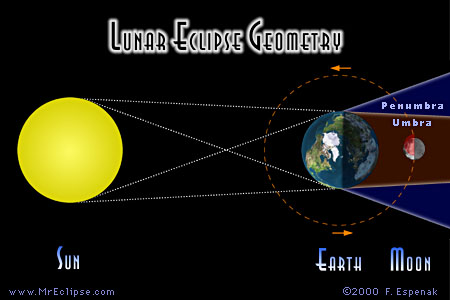
FCAT REFERENCE SHEETS AND PRACTICE ACTIVITIES
Earth Space Science Reference Guide
 |
| Solar Properties |
 |
| Seasons |
 |
| Solar Eclipse |
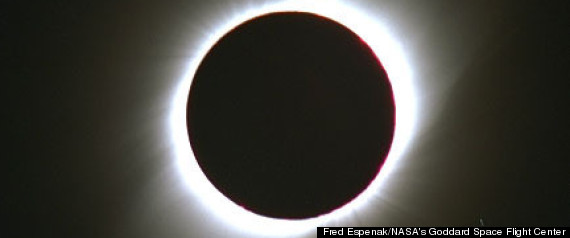 |
| Solar Eclipse |

 |
| Rotation and Revolution |
 |
| Layers of the Atmosphere |
 |
| HR Diagram |
 |
| Methods of Heat Transfer |
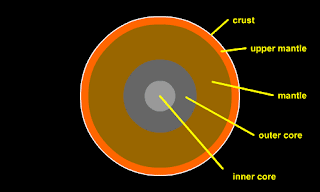 |
| Layers Of Earth (Not to Scale) |
Weather
(Short Term Conditions)
Ex. Today’s high was 930F
On Jan 31, 2000, 50 cm of snow fell
Tomorrow’s humidity will be 30 %
Climate
(Average Conditions over Long Term)
Ex. The average temp for 2008
was 700F
From 1950 – 2000, April was the
month with the highest rainfall
Processes of Scientific Inquiry
-formulation of scientifically
investigatable questions
-construction of
investigations into those questions
-the collection of
appropriate data
-the evaluation of the
meaning of those data
-the communication of this
evaluation
Wednesday, December 2, 2015
12/2/15 and 12/3/15
Topic: Periodic Table
Objectives:
Periodic Table Notes
Topic: Periodic Table
Objectives:
- Describe that as you move from left to right in a period (row) on the Periodic Table, the number of protons increases by one.
- Describe that elements found in the same group/family (column) have the same properties.
- Recognize that elements are grouped in the Period Table of Elements according to their properties.
Periodic Table Vocabulary:
- Atom
- Element
- Proton
- Neutron
- Electron
- Atomic Number
- Periodic Table
- Group or Family (Column)
- Period (Row)
Reference Pages:
- ScienceSaurus: Periodic Table page 265
- Fusion Science Textbook pages 377-387
Periodic Table Literature Connection
Periodic Table Videos
The Periodic Table: Properties of Groups and Periods Periodic Table Video Quiz 1
- Study Jams Periodic Table Video (Students will take the quiz after watching the video).
- Study Jams Elements and Compounds Video (Students will take the quiz after watching the video).
- Brain Pop Periodic Table of Elements (Students will complete the quiz after viewing the video. (Password/Username palmbeach/palmbeach)
Periodic Table Tutorial(s)
Students will copy and then summarize the Periodic Table Notes.
- Atomic Number is defined as the number of protons in the nucleus of an atom.Every atom of the same element has the same number of protons.
- The number of protons determines the identity of the element.
- Typically atoms have the same number of protons, neutrons and electrons.
- The mass number is the total number of protons and neutrons in an atom.
- The periodic table is arranged in horizontal rows of increasing atomic number from left to right. It is also organized into vertical columns with similar characteristics.
- Atoms are composed of protons, neutrons and electrons. These particles can be distinguished based on mass, location and charge.
- Protons: 1 amu (atomic mass unit), in nucleus, positively charged
- Neutrons: approximately 1 amu, in nucleus, neutral charge
- Electrons: negligible mass, outside nucleus, negatively charged.
- Period Number = Number of Energy Levels
- Valence electrons increase moving left to right across the period.
- Groups = Families. Groups have similar properties!
- Acidity increases from Group 1 to Group 18
- Solubility of Metal salts decreases from Group 1 to Group 16
- Metal Salts in water conduct electricity
- Non-metal molecules do not conduct electricity in water
- Solubility is unrelated to element type
Friday, November 27, 2015
11/25-26/15
Topic: Atoms
Objectives:
Vocabulary (Students will create a Foldable for each term).



Topic: Atoms
Objectives:
- Identify that atoms are the smallest unit of all matter and each atom consists of protons, neutrons, and electrons.
- Identify the location of the nucleus and electrons and determine which subatomic particles belong in each location.
- Create models of atoms in order to identify the number and location of their protons, neutrons, and electrons.
Vocabulary (Students will create a Foldable for each term).
- Atom
- Proton
- Neutron
- Nucleus
- Electron
- Electron Cloud
- Atomic Number
- Atomic Mass
Atoms Vocabulary Practice
- Vocabulary Practice 1
- Vocabulary Practice 2 Quia
- Vocabulary Practice 3 Flashcards
Atoms Videos
- Intro to Atoms Video 1
- Intro to Atoms Video 2 (Parts of an Atom)
- Study Jams Video (Atoms). Students will watch the video and take the quiz
- Brain Pop Video (Atoms). Students will watch the video, take the quiz, and complete assignments under activities (password/ username palmbeach)
Atoms Tutorial
- Atoms Tutorial (Students will print the certificate or email it to the teacher)
- Atoms Tutorial 2
- Atoms Tutorial 3
Atoms Assignments
- Atoms Graphic Organizer Students will complete the assignment and have it ready for their Interactive Journals.
- Compare Atoms and Molecules Graphic Organizer Students will complete the assignment and have it ready for their Interactive Journals.
- Create models of atoms in order to identify the number and location of their protons, neutrons, and electrons. The models should be colorful and labeled with parts of an atom.
Atoms Interactive Assignments
Atoms Images



11/20-24/15
Topic: Mixtures and Solutions
Objective: Distinguish between Mixtures and Solutions. Give and describe examples of both concepts.
Mixture and Solutions Video 1
Solutions, Suspension, and Colloid Video 2
Solutions, Suspension, and Colloid Video 3
Mixture and Solutions Article
Mixture and Solution Tutorial 1
Mixture and Solution Tutorial 2
Mixture and Solution Interactive Activity 1
Mixture and Solutions Interactive Activity 2
Mixture and Solutions Interactive Activity 3
Mixture and Solution Interactive Activity 4
Mixture, Solutions, and Pure Substances Vocabulary (Students will create a Vocabulary Foldable for each term).
Topic: Mixtures and Solutions
Objective: Distinguish between Mixtures and Solutions. Give and describe examples of both concepts.
Mixture and Solutions Video 1
Solutions, Suspension, and Colloid Video 2
Solutions, Suspension, and Colloid Video 3
Mixture and Solutions Article
Mixture and Solution Tutorial 1
Mixture and Solution Tutorial 2
Mixture and Solution Interactive Activity 1
Mixture and Solutions Interactive Activity 2
Mixture and Solutions Interactive Activity 3
Mixture and Solution Interactive Activity 4
Mixture, Solutions, and Pure Substances Vocabulary (Students will create a Vocabulary Foldable for each term).
- Heterogeneous Mixture
- Homogeneous Mixture
- Mixture
- Pure Substance
- Solution
Solute substance that gets dissolved, Solvent Substance that dissolves , and Solution result of combining a solute and solvent.  |
Wednesday, November 18, 2015
11/18-19/2015
Topic: Physical and Chemical Changes
Objective:Distinguish between Physical and Chemical Changes
Home Learning:Study, review online information, and complete Physical and Chemical Chane Tutorial. **Print the certificate or take a picture.
Physical and Chemical Change Video 1
Physical and Chemical Change Video 2 (password/username: palmbeach/palmbeach
Physical and Chemical Change Power Notes (Complete Guided Notes using this power point)
Physical and Chemical Change Tutorial
Physical and Chemical Changes Activity 1
Physical and Chemical Changes Activity 2
Physical and Chemical Changes Activity 3
Physical Property
Chemical Property
Physical Change
Chemical Change
Law of Conservation of Mass
Conserve
Temperature
Physical and Chemical Changes Images


Topic: Physical and Chemical Changes
Objective:Distinguish between Physical and Chemical Changes
Home Learning:Study, review online information, and complete Physical and Chemical Chane Tutorial. **Print the certificate or take a picture.
Physical and Chemical Change Video 1
Physical and Chemical Change Video 2 (password/username: palmbeach/palmbeach
Physical and Chemical Change Power Notes (Complete Guided Notes using this power point)
Physical and Chemical Change Tutorial
Physical and Chemical Changes Activity 1
Physical and Chemical Changes Activity 2
Physical and Chemical Changes Activity 3
Vocabulary Terms (Students should know the meaning of each term).
Physical Property
Chemical Property
Physical Change
Chemical Change
Law of Conservation of Mass
Conserve
Temperature
Physical and Chemical Changes Images


Sunday, November 15, 2015
11/16-17/2015
Topic: Properties of Matter
Objective(s): Identify substances using their properties of matter.
Home Learning: Study and watch physical properties tutorial.
Students will create a Vocabulary Foldable for the following terms:
- Solubility
- Solute
- Solvent
- Solution
- Saturation Point
- Thermal Conductivity
- Electrical Conductivity
- Melting Point
- Boiling Point
- Magnetism
Study Jams Properties of Matter Video
Properties of Matter Power Notes
Properties of Matter Tutorial
Properties of Matter (Boiling point/Melting Point) ***Read all of the pages, we will have a quiz on the information!!!!)
11/12-13/15
Topic: States of Matter
Objective: List, Compare, and Contrast States of Matter
Home Learning: View, Analyze, and Complete Classifying/Comparing Physical Properties Tutorial (We will discuss in class on 11/16-17/2015)
States of Matter Power Notes (Use this to complete the States of Matter Guided Notes)
States of Matter Video 1
States of Matter Video 2
Images of States of Matter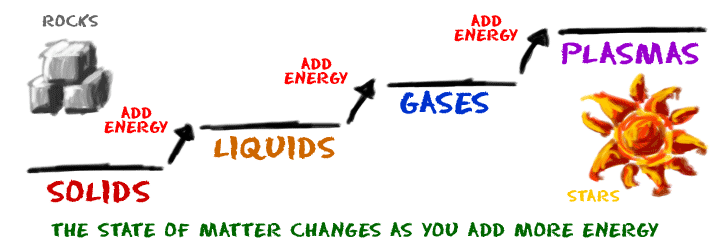

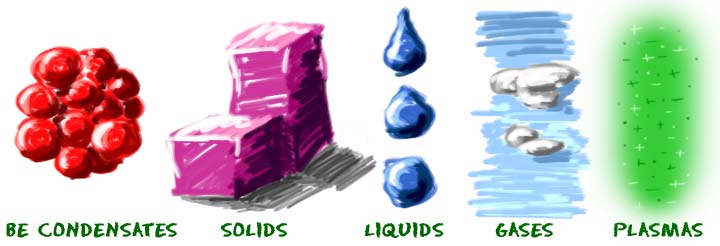
Topic: States of Matter
Objective: List, Compare, and Contrast States of Matter
Home Learning: View, Analyze, and Complete Classifying/Comparing Physical Properties Tutorial (We will discuss in class on 11/16-17/2015)
States of Matter Power Notes (Use this to complete the States of Matter Guided Notes)
States of Matter Video 1
States of Matter Video 2
Images of States of Matter



Sunday, November 8, 2015
11/09-10/15
Topic: Intro to matter
Mass vs. Weight Video 1
Mass vs. Weight video 2
Mass vs. Weight 3
Objective: Describe the difference between an object's mass (measure of matter) and an object's weight (measure of gravity).
1. Mass is a measurement of the amount of matter something contains, while Weight is the measurement of the pull of gravity on an object.
2. Mass is measured by using a balance comparing a known amount of matter to an unknown amount of matter.

Rotation 1:
Students will create a vocabulary foldable for the following terms:
Rotation 2:
Students will complete Intro to Matter guided notes, while watching and analyzing, a Fusion "Intro to Matter" Lesson. Power Notes Power-point for Intro to Matter
Rotation 3:
Students will have a data chat with the teacher to examine their test scores.
Topic: Intro to matter
Mass vs. Weight Video 1
Mass vs. Weight video 2
Mass vs. Weight 3
Objective: Describe the difference between an object's mass (measure of matter) and an object's weight (measure of gravity).
1. Mass is a measurement of the amount of matter something contains, while Weight is the measurement of the pull of gravity on an object.
2. Mass is measured by using a balance comparing a known amount of matter to an unknown amount of matter.

Rotation 1:
Students will create a vocabulary foldable for the following terms:
- Mass
- Volume
- Density
- Matter
- Weight
- Ratio
- Displacement
- Proportional
Rotation 2:
Students will complete Intro to Matter guided notes, while watching and analyzing, a Fusion "Intro to Matter" Lesson. Power Notes Power-point for Intro to Matter
Rotation 3:
Students will have a data chat with the teacher to examine their test scores.
Calculation Formulas
 |
| Calculation Formulas |
11/5-6/2015
Topic: Structure of the Universe
Click and review the following:
Structure of the Universe video 1
Structure of the Universe 2
Formation of the Solar System
2.Galaxy
3.Solar system
4.Star
5.Planets
6.Moons
What is meant by the term observable universe?
A term referring to the volume of space that we are physically able to detect.
Home Learning:
Topic: Structure of the Universe
Click and review the following:
Structure of the Universe video 1
Structure of the Universe 2
Formation of the Solar System
Whats the order from largest to smallest, galaxy, universe, star, planets, moons, solar system?
1.Universe2.Galaxy
3.Solar system
4.Star
5.Planets
6.Moons
What is meant by the term observable universe?
A term referring to the volume of space that we are physically able to detect.
Home Learning:
- Study science content (Quiz on 11/10-11/15 over the Sun and Structure of the Universe).
- Complete assignments not finished during class.
Wednesday, November 4, 2015
11/3-4/2015
Structure of the Universe
Rotation Stations
1. Universe Guided Notes
2. Achieve 3000
3. HOT questions
4. Vocabulary Foldable
Review Structure of the Universe video
11/2/2015
The Sun
Rotation Stations
1. Achieve 3,000
2. Sun Guided Notes (Sun Power-point is located on Focus)
3. Vocabulary Foldable
4. HOT questions
Home Learning: pages 131-141
Review these Sun videos
Sun Activities
Sun Song
Structure of the Universe
Rotation Stations
1. Universe Guided Notes
2. Achieve 3000
3. HOT questions
4. Vocabulary Foldable
- Use reference pages 72-81 to define and illustrate the terms
- Planet
- Universe
- Solar System
- Galaxy
- Star
Review Structure of the Universe video
11/2/2015
The Sun
Rotation Stations
1. Achieve 3,000
2. Sun Guided Notes (Sun Power-point is located on Focus)
3. Vocabulary Foldable
4. HOT questions
Home Learning: pages 131-141
Review these Sun videos
Sun Activities
Sun Song
Thursday, October 22, 2015
Stars 10/22-23/2015
Teacher and Students will view and discuss a "Stars" Power-point.
Students will create a Vocabulary Foldable for the following terms:
1. Planet
2.
Sun
3. Solar nebula
4. Apparent magnitude
(brightness)
5. Absolute brightness (Luminosity)
Guided Notes
Pages 85-93
Hertzsprung Russell Graph activity
 | ||
| HOW DO I READ A HR DIAGRAM? (Click) |
 | |
| Colors of stars based on temperature going from hottest to coolest. |
Blue, White, Yellow, Orange, and Red
Subscribe to:
Comments (Atom)
Date: December 12/17/2019 Topic: Weathering, Erosion, and the Rock Cycle Objective: Identify examples of of suface processes that af...
-
11/20-24/15 Topic: Mixtures and Solutions Objective: Distinguish between Mixtures and Solutions. Give and describe examples of both concep...
-
11/09-10/15 Topic: Intro to matter Mass vs. Weight Video 1 Mass vs. Weight video 2 Mass vs. Weight 3 Objective: Describe the differe...
-
8th Grade Date; September 18, 2017 Topic: Acid, Bases, and Salts Home Learning: Study for vocabulary quiz Acids, Bases, and S...






